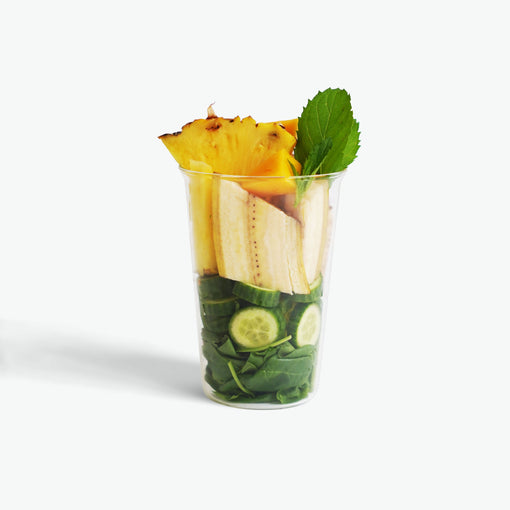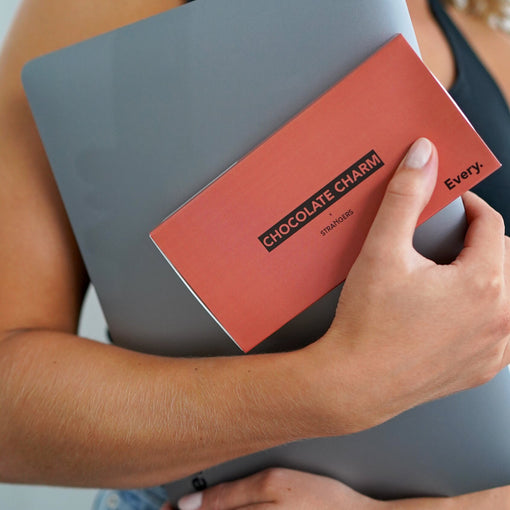Add {{ number }} more products to save {{ price }}
0
Add {{ number }} more products to save {{ price }}
noch 1 Produkt für gratis Versand (spare 5,99€)
How to Organise Your Freezer
Your freezer is looking chaotic? No idea where anything is or what the best-before date is? You're not alone. With our tips and insights we'll show you how to organise your fridge and freezer.

Organisation is Key
Contents of this article:
- Label before you organise
- Organisation in 5 easy steps
- Do not freeze these foods
- Quick recipe ideas with frozen foods
Who doesn’t know the nuisance of trying to grab something from the freezer, and finding yourself combing through half opened packages, loose vegetables rolling around and unlabeled tupperware boxes. It becomes painfully obvious that the freezer is in a pretty chaotic state and some organisation might do it some good. We’ll explain how to best organise your things and how to preserve your food best.
Label before your organise
A real meal prepper has countless tupperware boxes in hers or his fridge/freezer, but without labelling, the contents remain mysterious until it's on your plate. To avoid confusion, and to allow yourself to navigate all your meals easily, label everything you store. All you need to note is the meal or type of product and the day in which you froze it. That way, you know exactly what to expect, you know how much you have of each item, and you have a rough timeline of when you should eat your meal. If you’re buying frozen food, then you don’t have to go these lengths, as all the information is already there.
Once you’ve successfully identified content and expiration date, the remaining question is where to best store your items. Which section is suitable for what? Do you store larger items at the top or bottom? Some of these questions are self-explanatory, depending on the size and number of compartments of your freezer.
|
Temperature | Application | Storage Period | Meals |
|||
1 Star * |
Up to -6 °C | Short-term storage | Up to 1 week | Diverse |
|||
2 Stars ** |
Up to -12 °C | Medium-term storage | Up to 3 weeks |
Diverse |
|||
3 Stars *** |
Up to -18 °C | Long-term storage | Several months | Premade meals Baked goods Raw doughs |
|||
4 Stars **** |
-18 °C and colder | Freezing and long-term storage | 1 year and beyond | Fruit Vegetables Frozen meals Ice cream French fries |
As you can see, different compartments of your freezer have different functions. The right storage of your food not only facilitates structure and organisation, but also ensures that your products keep.
For our Every. products, sufficient cooling and the proper storage is important to maintain the consistency and quality of the products. Our soups, bowls, raw cakes etc. keep for up to a year if you store them properly and don’t interrupt the cooling chain. All the necessary information can of course be found on the individual packages as well. In case you’ve already thawed your Every. Dish and decide to eat something else, you can simply store it in your refrigerator for up to 2 days, but no longer. Once the thawing process has started, do not refreeze.
Organisation in 5 easy steps
Even frozen foods can spoil if stored incorrectly. To avoid this happening, we have put together some useful tips to help you. Not only will this help reduce unnecessary food waste, but it will also save you valuable time next time you’re searching for something in your freezer.
Perishable and frequently used foods. These should be placed towards the front of your fridge or at the top of your freezer. That way they are easily accessible once you open the door.
Long-lasting and infrequently used foods. These you can place further back or in the bottom of your fridge or freezer.
Almost used up bags and packages should be rearranged. One portion of frozen french fries or vegetables are left over? To avoid having loose vegetables lying around and risk forgetting them, its best to fill these into tupperwares or plastic bags. Place them somewhere where they can be easily seen so that they aren’t forgotten.
Label repackaged items. Regardless whether these are self-made items or repackaged bought items, use labels to identify the product as well as the date when you placed it in your freezer.
Healthy items at eye level. We tend to reach for things that are right in front of us or catch the eye. If fruit and vegetables are placed in the top or bottom shelves, it’s less likely that we will reach for them. This is in fact a strategy also used by supermarkets.
Do not freeze these foods
There is a range of foods that actually don’t keep longer frozen, but actually spoil faster. These include foods that have a high water content (e.g. cucumbers, watermelon, lettuce) raw vegetables (e.g. tomatoes, potatoes and apples) as well as vegan alternatives (e.g. yoghurt, milk). These foods are altered once they thaw, which affects their texture. Water-rich vegetables get an unpleasant watery consistency while vegan yoghurts and milks can become gritty.
Quick recipe ideas with frozen foods
Frozen foods are a great alternative to fresh produce. Frozen fruit and vegetables are not only practical, they tend to be richer in nutrients and vitamins. Did you know that spinach stored in a refrigerator loses 50% of its Vitamin C content in just 2 days? The advantage of frozen foods is that all the nutrients are optimally preserved and remain virtually unchanged until you heat them up. Finally, you can save plenty of time avoiding the cleaning, peeling and chopping required of fresh vegetables, by buying the frozen counterpart. Here are some quick and easy recipes which will help you use up any frozen foods you have in your freezer.
1. Gnocchi with vegetables
Ingredients:
250 g gnocchi
Frozen peas and carrots
Frozen broccoli
Frozen mushrooms
1 onion
1 clove of garlic
Salt and pepper
Oil for frying
Preparation:
Depending on how many people are eating, portion your vegetables and store the remainders in the freezer.
Peel the onion and quarter. Finely slice the garlic
Heat your pan with some oil and fry the gnocchi until they are golden brown
Add the frozen vegetables and some water, reduce the heat and let the entire mixture cook for approximately 10 minutes
Add salt and pepper to taste and serve warm
2. Vegetable soup
Ingredients:
Frozen peas and carrots
Frozen cauliflower
Frozen broccoli
2-3 medium sized potatoes
1 onion
500 ml vegetable broth
Pepper
Preparation:
Depending on how many people are eating, portion your vegetables and store the remainders in the freezer.
Peel and finely chop the onion. Peel the potato and cut into quarters
Heat a large pot with some oil and briefly saute the onions
Add the frozen vegetables and potatoes. Add the vegetable broth
Cover the pot and cook for approximately 20 minutes
Add pepper to taste and swerve warm
3. Fruit salad with vegan vanilla sauce
Ingredients:
Frozen fruit mix
1 vanilla bean
10g corn starch
250 ml oat milk (or soy milk)
2 TB date syrup
Sprinkle of turmeric powder
Preparation:
Place frozen fruit in a bowl and let thaw
Cut the vanilla bean in half and scrape out the pulp.
Combine cornstarch and 4 TB of milk in a bowl and let rest
In a saucepan, bring the remaining milk to the boil together with the vanilla pulp and pod.
Carefully remove the vanilla pod with a spoon and whisk in the cornstarch. Stir in turmeric and date syrup as well.
Divide frozen fruit mix into bowls, serve together with the vanilla sauce.
In conclusion, the more organised your fridge and freezer are, the more time you save. Furthermore, this is essential to avoid wasting food and letting items spoil unnecessarily. Most foods can easily be frozen, but this doesn’t protect them from spoiling eventually. That’s why it’s important that you know how your gadget works and where to best store different items. This way your food stays good for longer periods.
Other exciting topics:
- Clean Eating While Travelling
- Sugar or Sugar Alternatives – What's the Better Option?
- Eating in the Home Office – A Relaxed Lunch Break
- Healthy Breakfast Ideas
- Green Power Bowl Recipe
For even more foodie-content, follow us on Instagram and join the Facebook Community to get involved in meal creations and to stay up to date on all things Every.

























